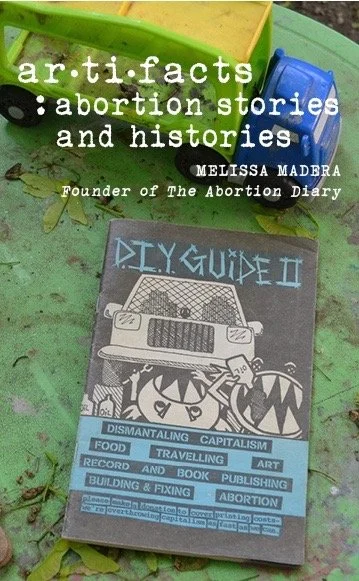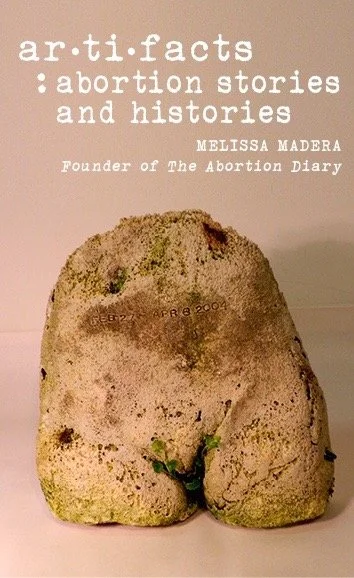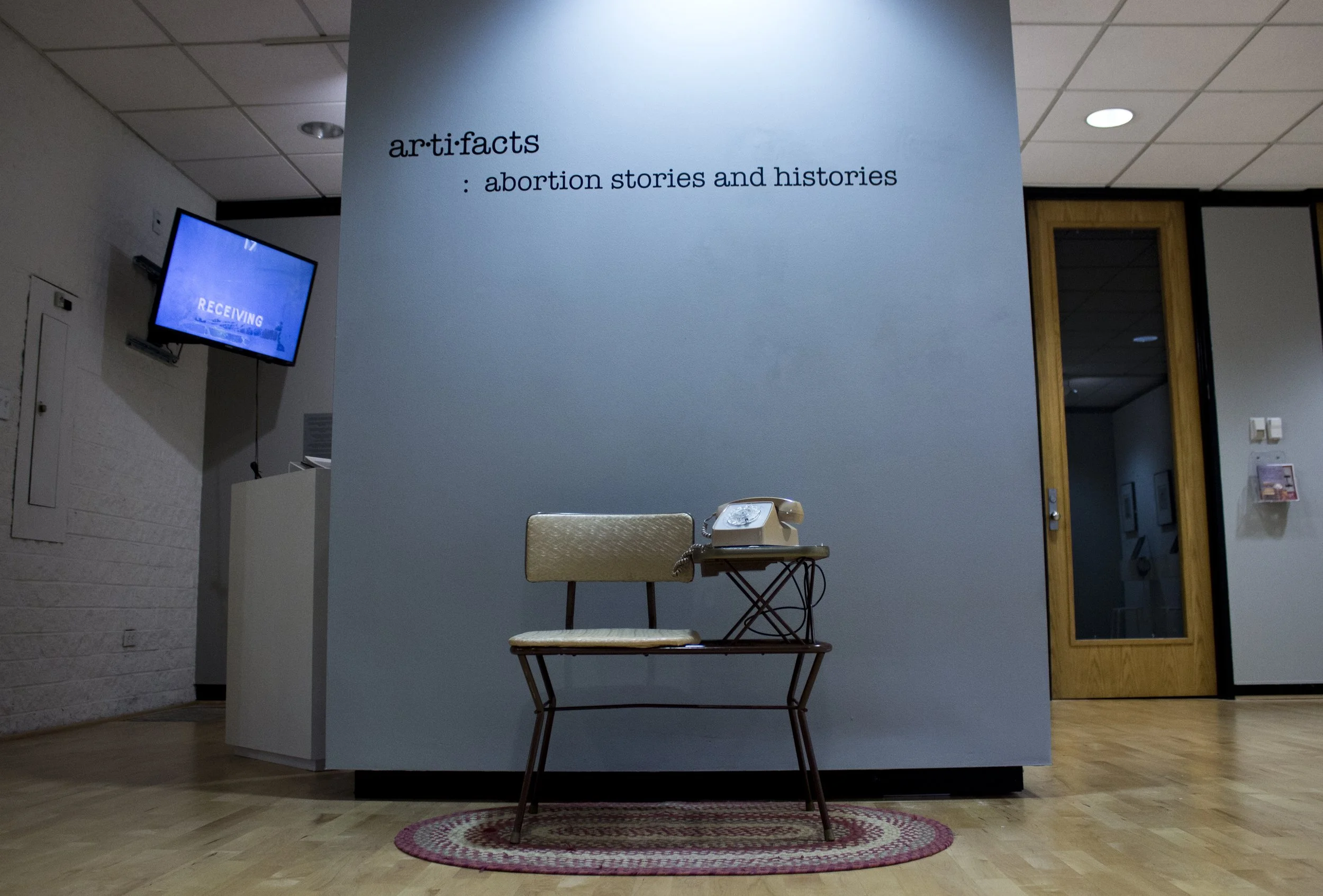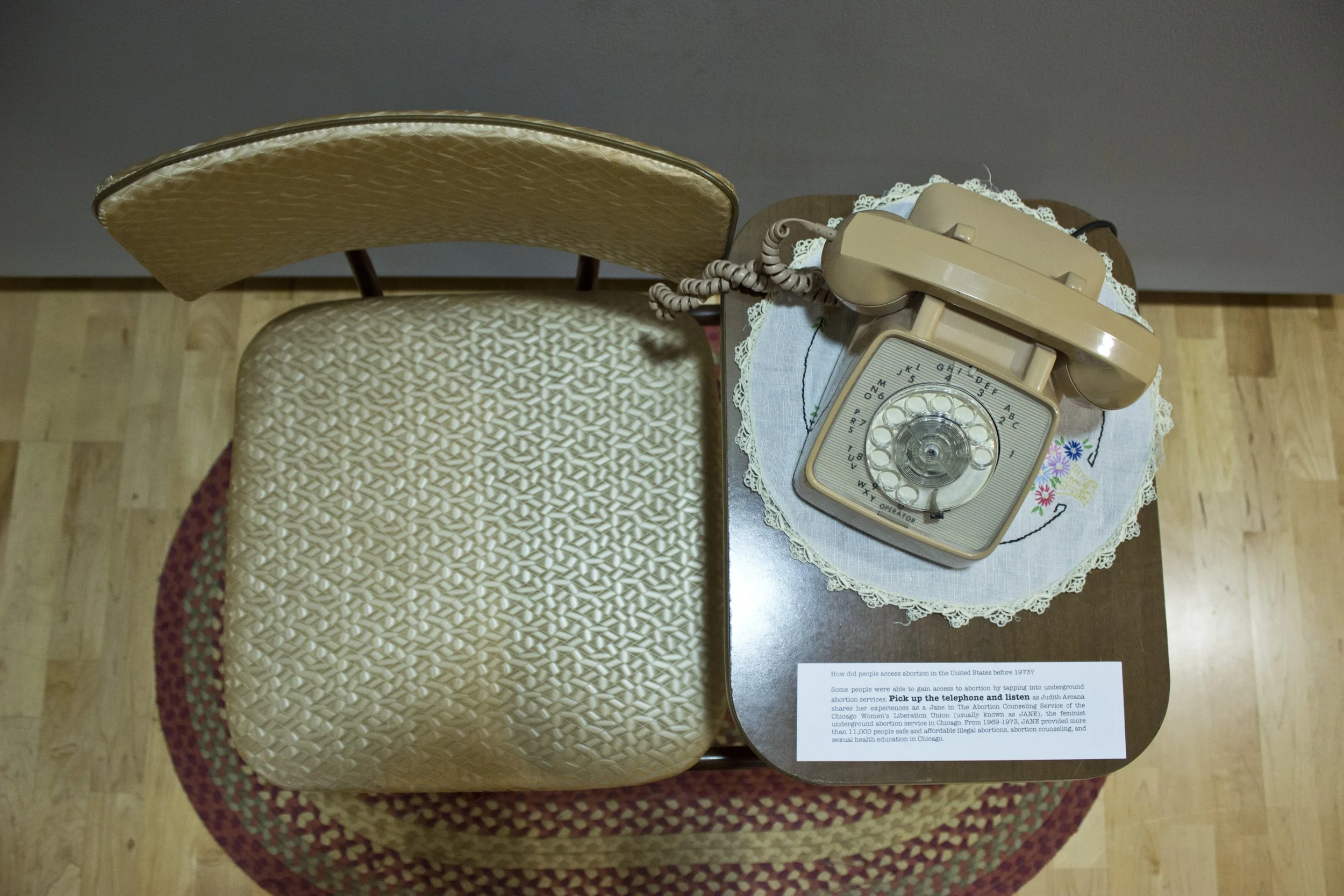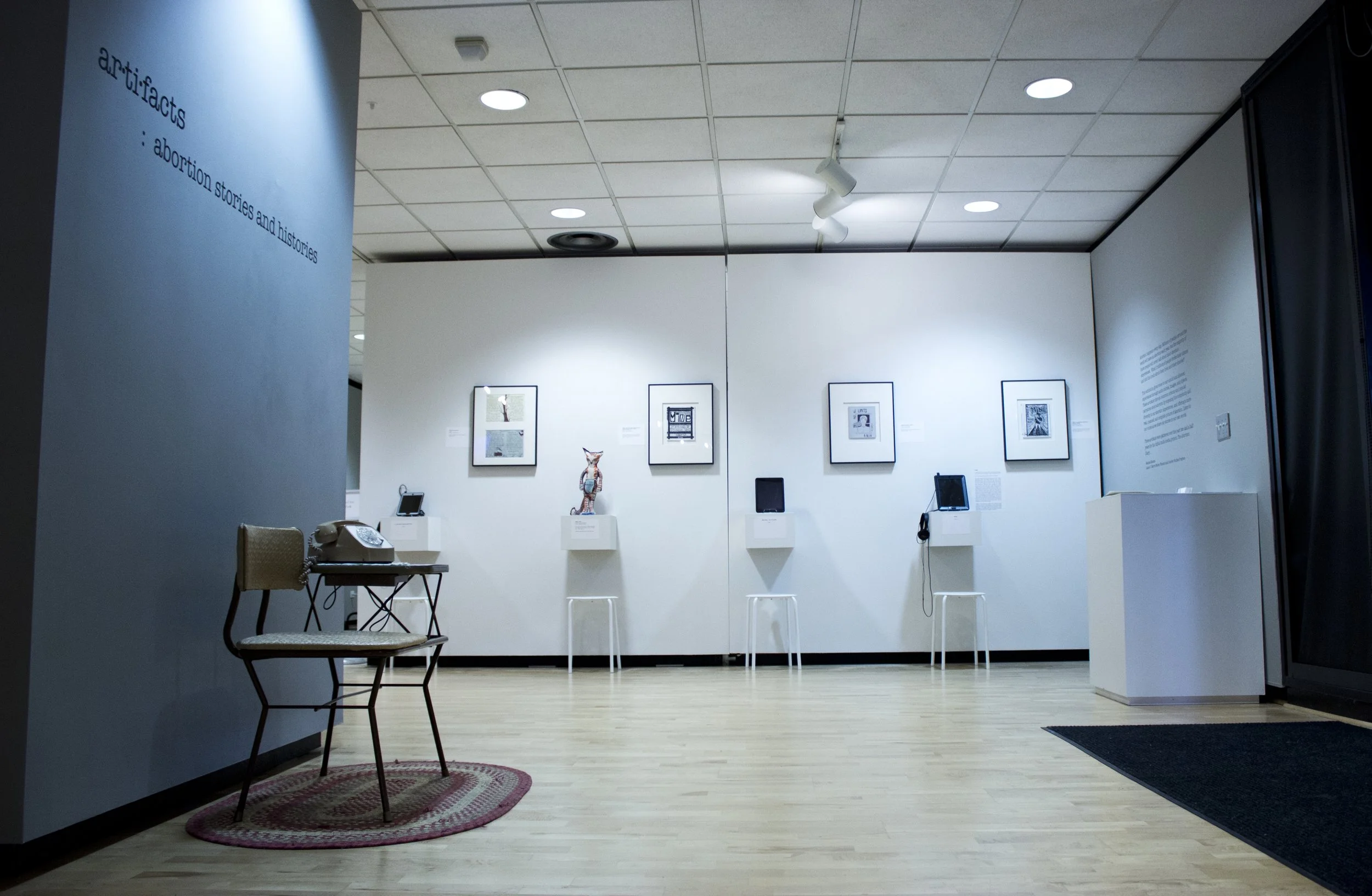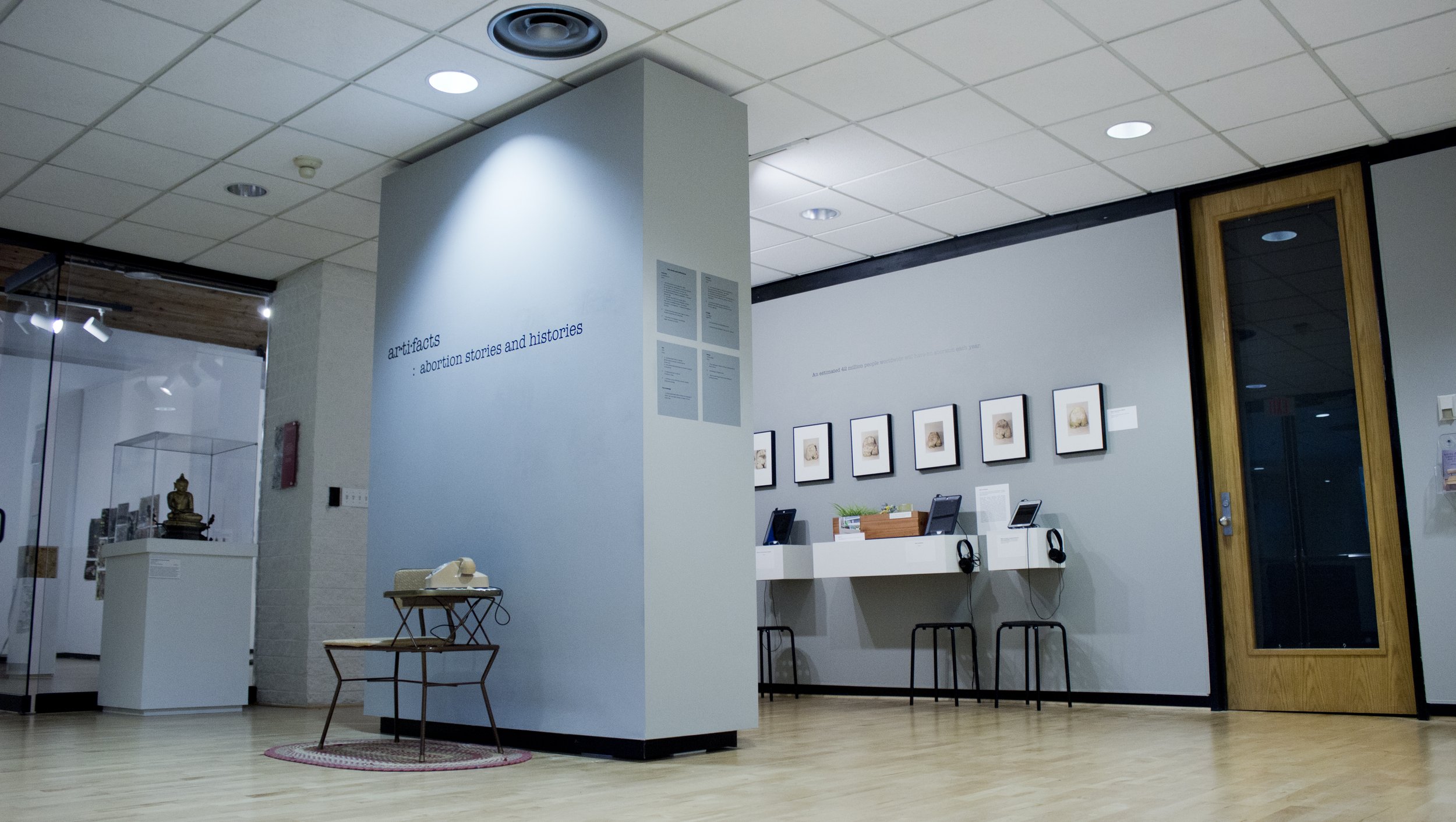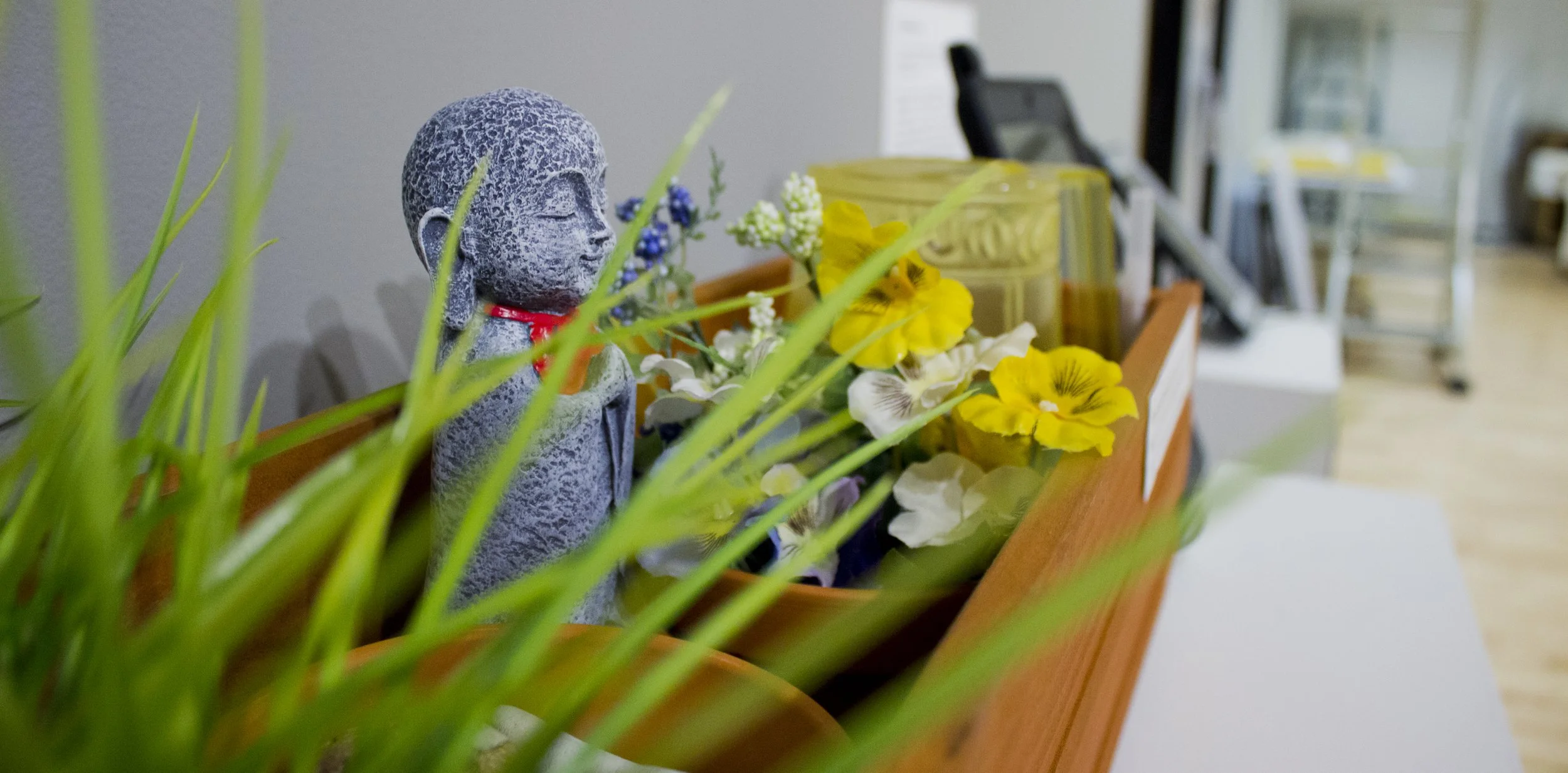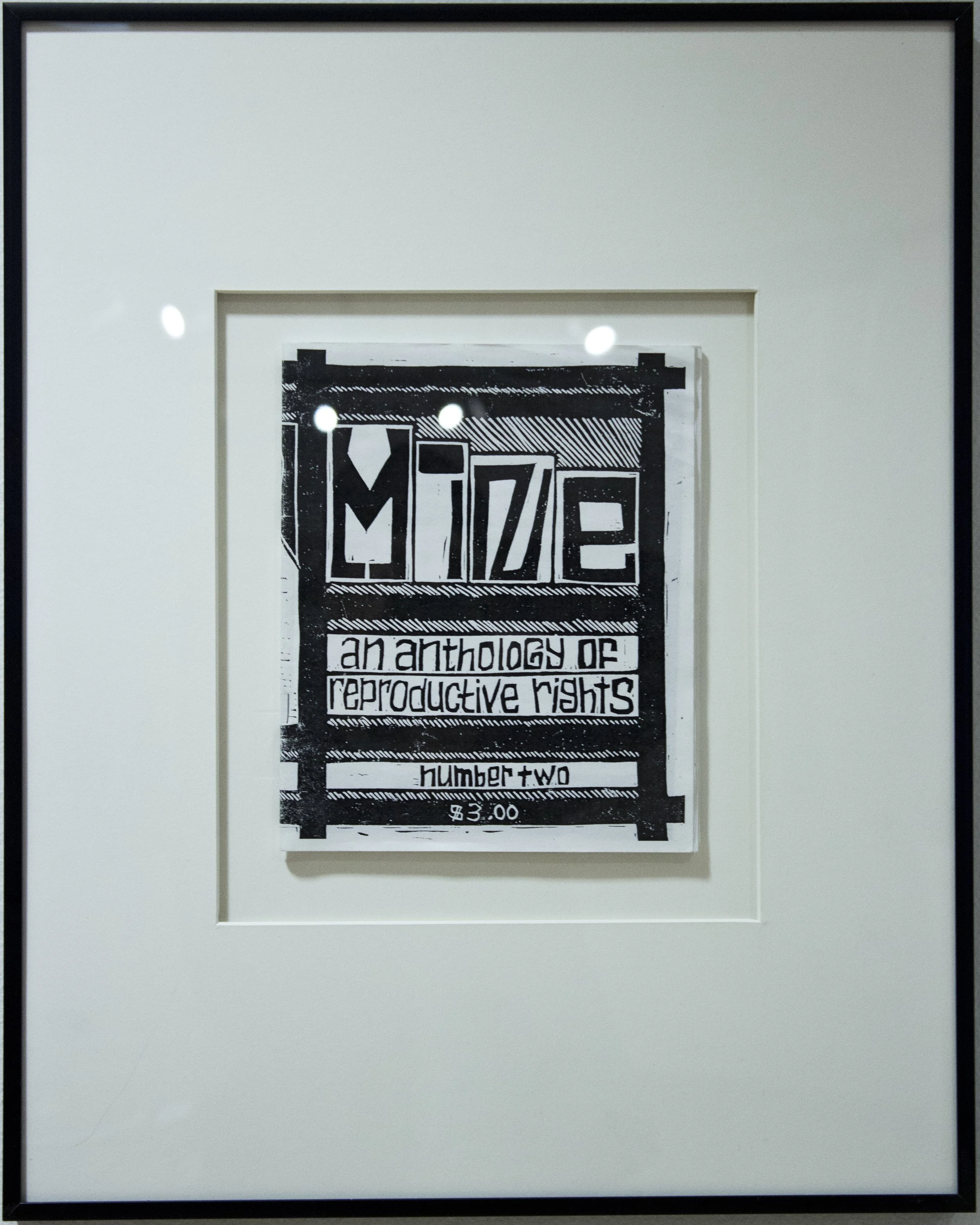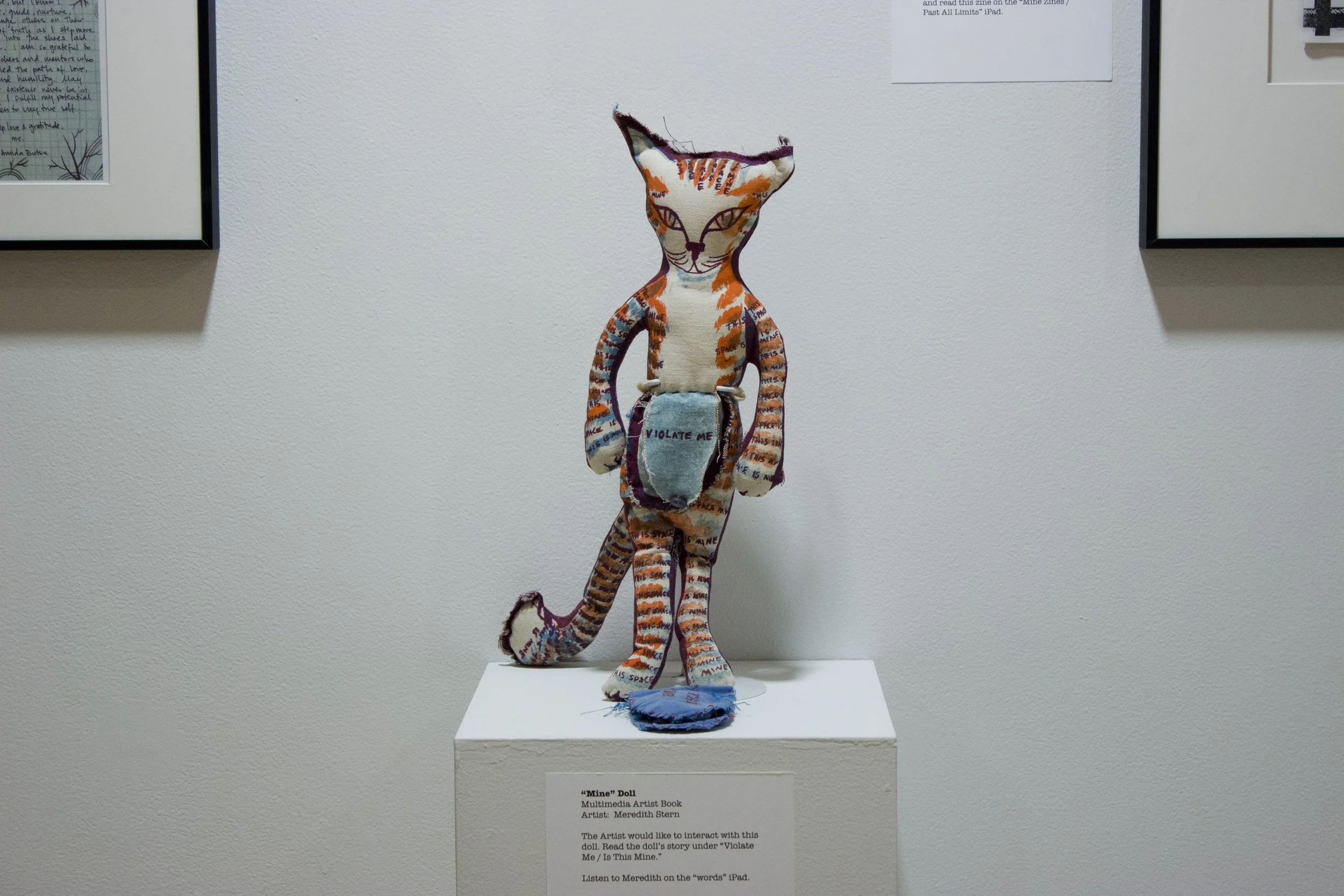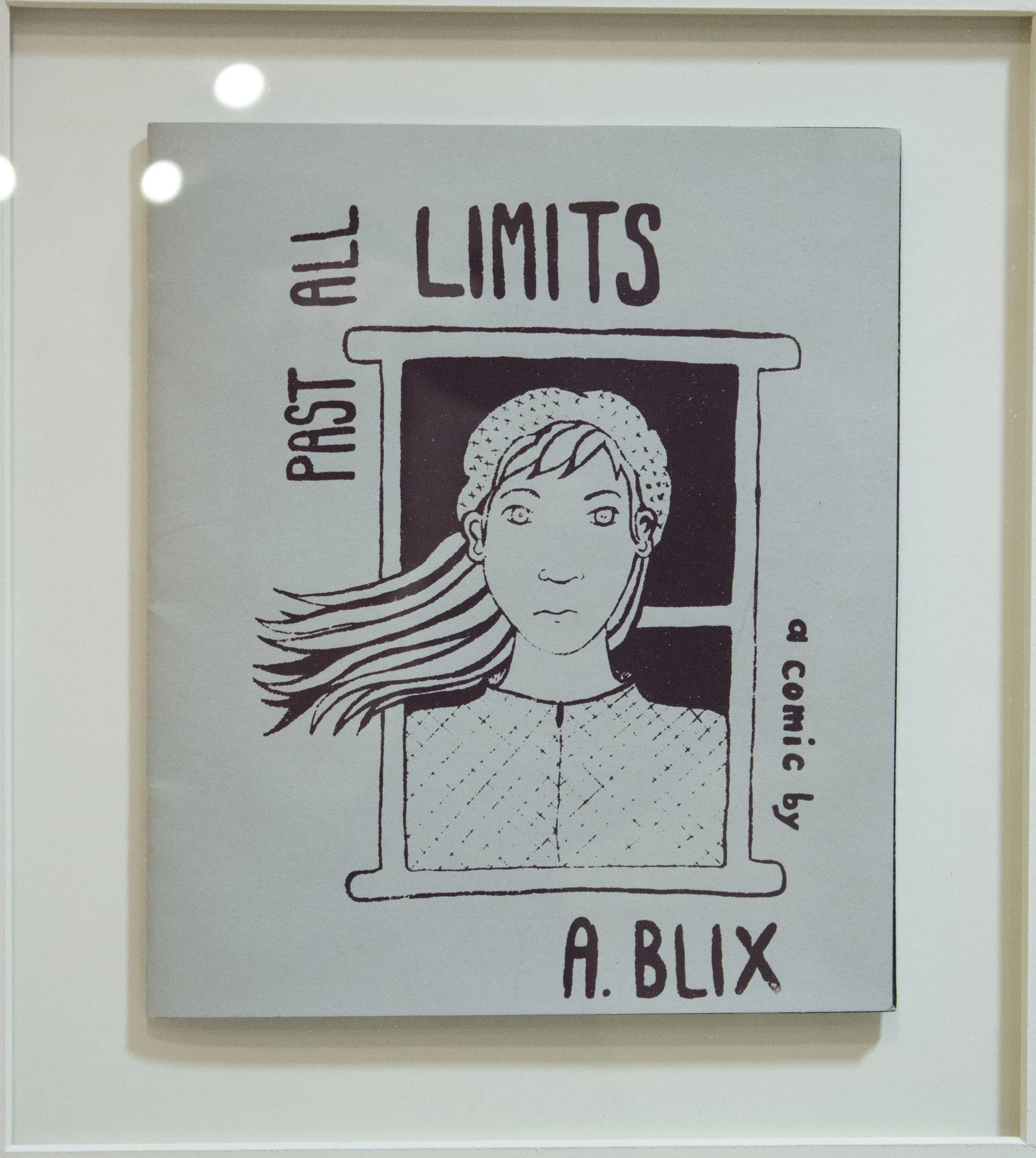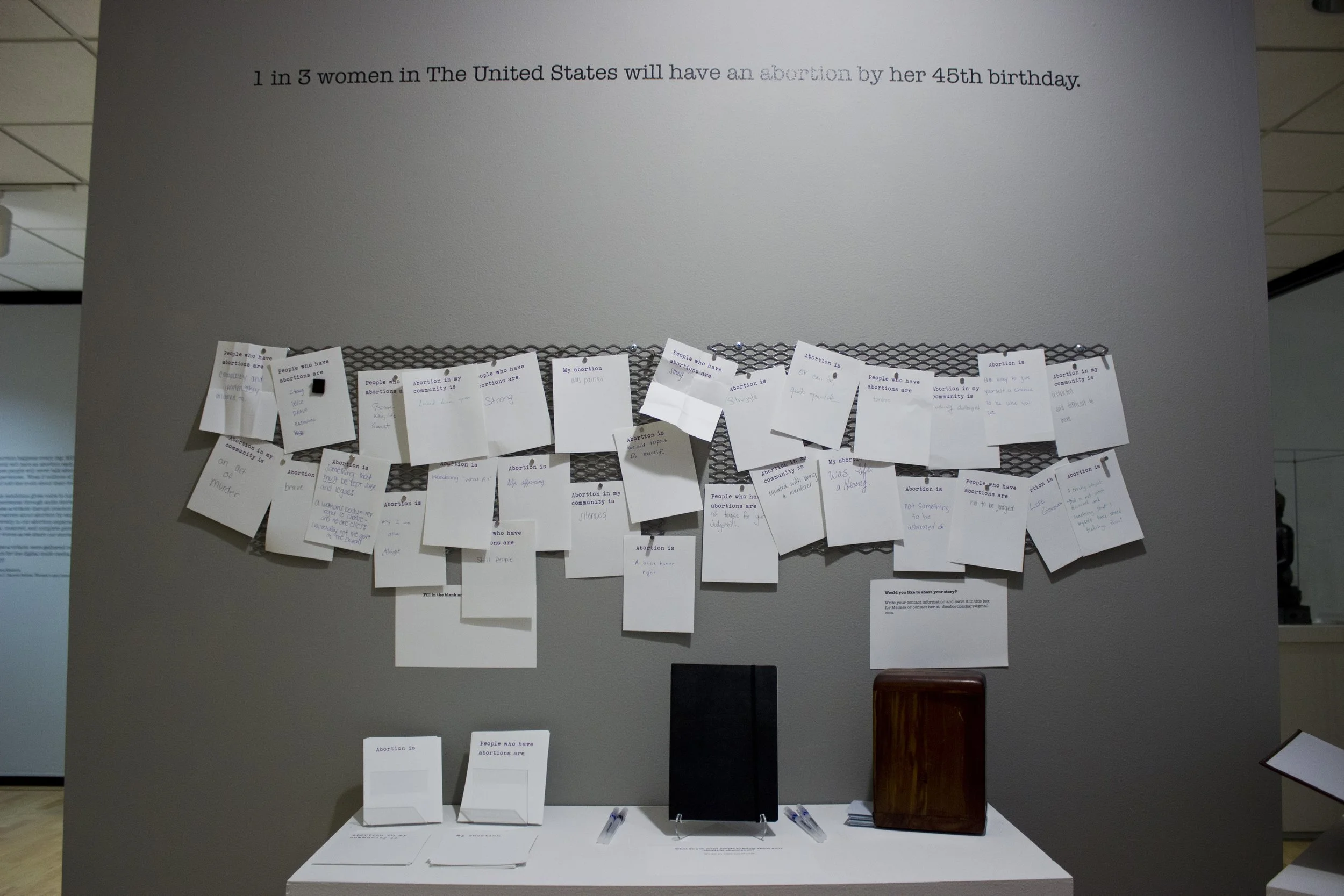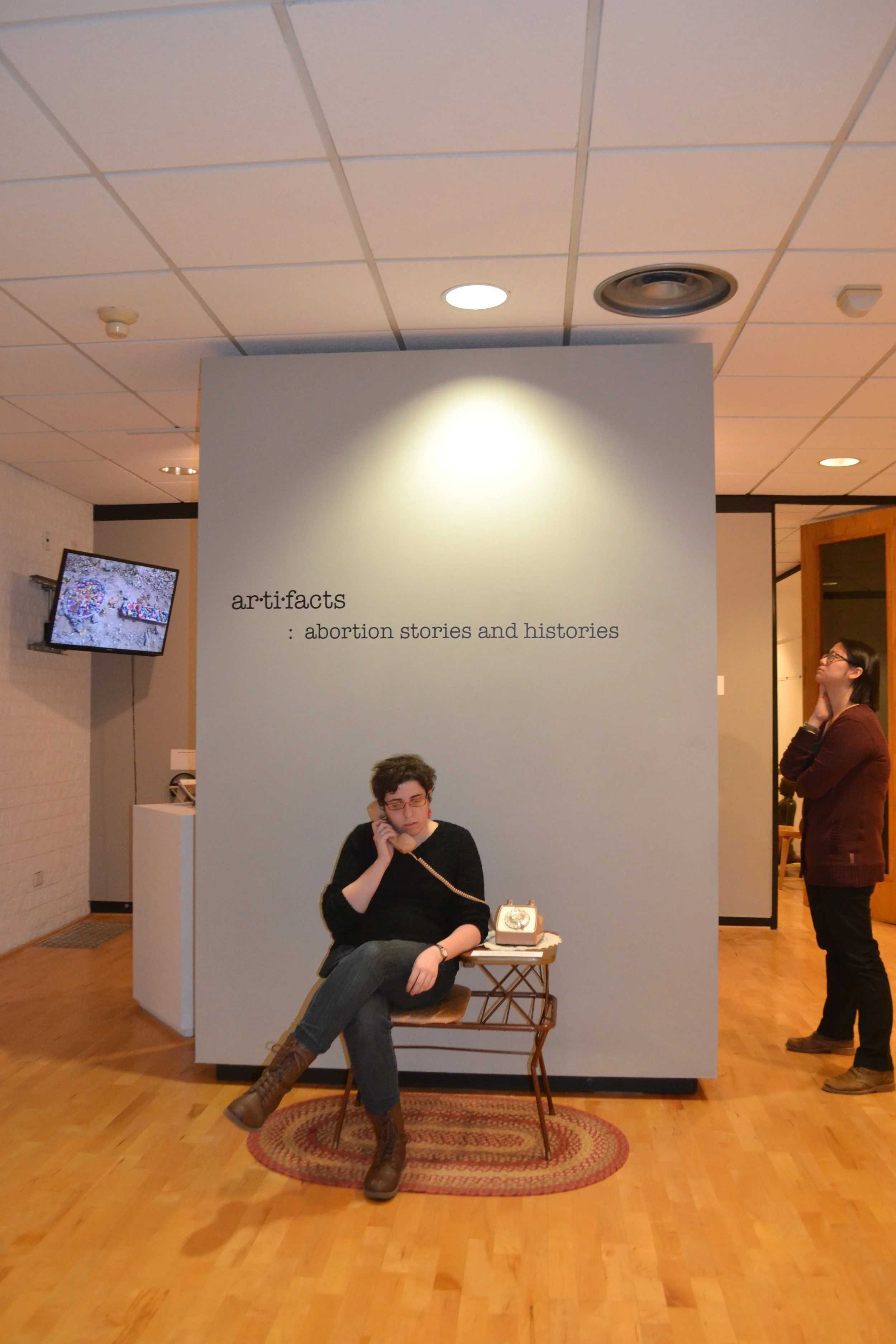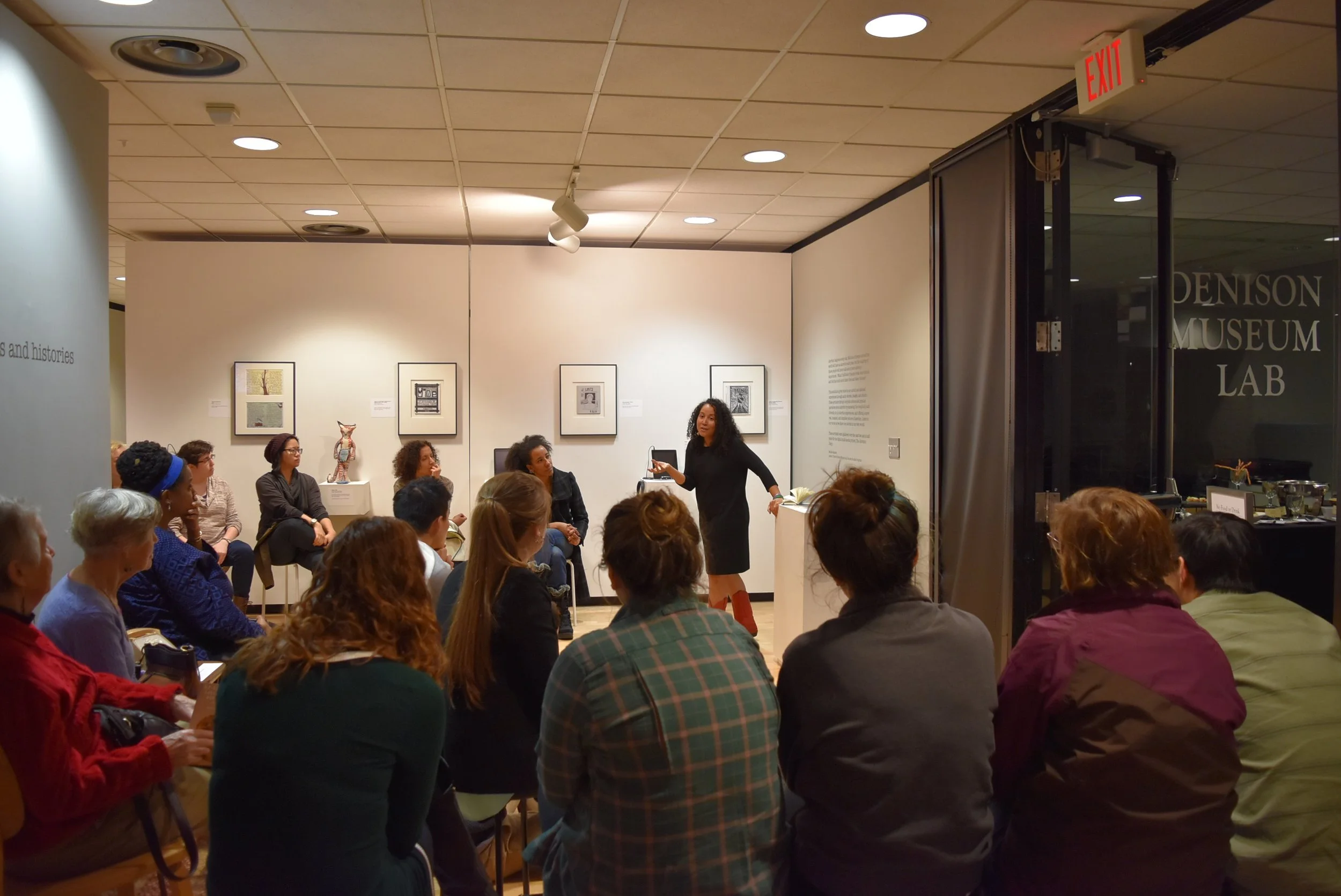ar·ti·facts: abortion stories and histories is a traveling exhibit. This exhibition gives voice to our untold and silenced experiences through audio stories, images, and objects. These ar·ti·facts I gathered throughout my travels with The Abortion Diary.
Bring “ar·ti·facts” to your college campus, museum, gallery, or organize a pop-up exhibit in your neighborhood or at a conference. ar·ti·facts: abortion stories and histories is a unique experience. Visitors listen to audio, and engage with text, quotes, images, objects, and interactive stations, which provide space for self interpretation, raises provocative questions for listeners and viewers, and sparks dialogue. This exhibit connects visitors with people's personal abortion experiences, offers audiences a more real and nuanced picture of abortion, and provides material for meaningful and relevant conversations in your community. Visitors listen to our voices as we share our stories in our own words.
Programming with the exhibit can vary from a 1 hour artist talk to a week or month-long residency, working with audiences to engage with the exhibit, foster dialogue, and gather stories from their own communities. Melissa will also lead a Q&A that includes topics like social justice, reproductive justice, combatting abortion and reproductive stigma, student leadership, community building, political empowerment, research, and digital humanities as well as abortion in media and popular culture. Additionally, for on campus exhibits, I can lead a second workshop and am available to have a meal with the students and faculty for more private discussions.
Exhibited
Duke University, Center for Documentary Studies, November 2019 - May 2020
“Labour of Love,” Array Studios, Belfast, Northern Ireland, May 2016
The Denison Museum, Denison University, Granville, OH, February 15th- April 1, 2016
ar·ti·facts: abortion stories and histories is a unique experience. Visitors can listen to audio, and engage with text, quotes, images, objects, and interactive stations, which provide space for self interpretation, raises provocative questions for listeners and viewers, and sparks dialogue. This exhibit connects visitors with people's personal abortion experiences, offers audiences a more real and nuanced picture of abortion, and provides material for meaningful and relevant conversations in your community. Visitors listen to our voices as we share our stories in our own words.
Exhibit Contents:
Three 16 X 20 framed zines.
One 16 X 20 framed letter.
Six 11 X 17 framed photographs.
One “Mine” doll and doll stand.
One photo album.
One “gossip” chair.
One telephone.
One window / garden box.
Two 12 X 24 Expanded Metal Sheets (with magnets and paper “fill in the blank” sheets).
Formatted exhibition labels (digital file).
Handouts / postcards (digital file).
Audio and video files.
Provided by museum/gallery space:
Six to eight iPads.
Six to eight clear front lip book easels.
One flat open book stand.
Eight headphones.
Two 3 X 3 pedestals.
Six 1 X 1 floating shelves.
Two 1 X 3 floating shelves.
Vinyl Wall Text
WHAT ARE PEOPLE SAYING?
“I believe this is amazing. It provides these women with a voice both to the public and to themselves to notice what they’ve overcome. Thank you for sharing your stories, brave and powerful women.”
“We often get lost in the statistics or the politics of abortion that we forget about the real women, from college to middle aged, who have lived it for all different reasons. As I listened to one woman’s story, I could picture her sitting on her couch, trying to flesh out her memory for whoever would listen. I could then go on to another station and hear the same woman tell us why she wanted to share her story. Weeks later I can still hear her voice. The power of these women’s voices is something I still reflect onneven after visiting the exhibit.”
“Seeing the gallery itself felt like a radical and brave act, since abortion stories have been cloaked
in so much silence for most of my life. The fact that the exhibit was there in the open, offering stories to hear, was amazing. I loved the interactiveness of the exhibit, that in order to fully experience we had to engage: pick up the phone, flip through the photo album, press play. In this way, I felt like I was involved in the movement to legitimize the sharing of such stories. It was also useful in helping me empathize with those who have had abortions, for while I must know many, many women who have had this procedure, only a couple have shared this experience with me”
